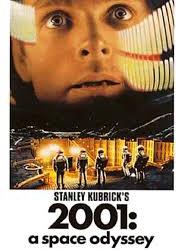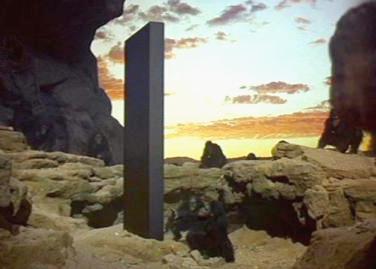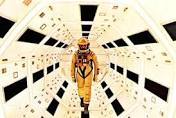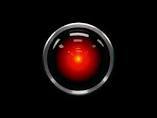#i think also it draws deliberate connections between the horror being described in the text and other historical (or even contemporary)
Explore tagged Tumblr posts
Text
thinking about how people don't understand the purpose of the Abject in tender is the flesh. yes it is disgusting it is grotesque the protagonist is complicit on a mass scale level in violence that's the POINT it is thematically about systematic violence and the human role in it. you don't have to like it, in fact you can hate it it's a personal literary preference but I'm begging people to understand that.
#literary studies#i think also it draws deliberate connections between the horror being described in the text and other historical (or even contemporary)#atrocities and state endorsed or enforced violence that have been buried or repressed (denied in some way)#'colonial amnesia' as an example#sorry i got mad and carried away its not that serious but im studying stuff
1 note
·
View note
Text
2001: A Space Odyssey
Been a while since I blogged. Anyway, after watching 2001: A Space Odyssey I had an urge to do so. It’s a spectacular film with that type of effect. It has also been number two on my list of ten science-fiction films that define the genre. It has done more than just define a genre it has also inspired several film-makers and some of it’s DNA can be felt in films like Under the Skin and Interstellar as well as scenes being given the pop-culture treatment of The Simpsons (Homer’s Blue Danube munching crisps in space scene).

So where do you begin in discussing a film that has had an emphatic impact on more than just science-fiction cinema? Well, the best place to begin is with the emptiness of space. That opening shot of a black expanse, defined by nothing other than the edges of the screen but it’s depth, it could go on for infinity. Before life there was only the void. The beginnings of a score strike up, what seems like background noise at first, becomes a tornado before it tails off and the opening credits appear and that imagery of the Earth, the moon, the sun and space all in alignment, as though a momentous event is occurring. Momentous might be the best word to describe the film. My own, specific, love of 2001: A Space Odyssey comes from the distinct acts that comprise the film beginning with The Dawn of Man.
The shots could be taken from a nature documentary of some type, those beautiful, expansive vistas, the Martian-esque landscape, the sun hanging in the sky or hovering just above a plateau. What this segment makes me think of though, is how man’s nature is cyclical. We are introduced to a tribe of our descendants, they move among four-legged beasts. Then one of their number is killed by a leopard. A food chain has now been established. We have not yet evolved to the stage where this monster can be confronted. This echoes later in the shot of the leopard over a felled zebra. Then there is a confrontation over a resource; the water pool. Two separate groups of apes screeching representing our base tribalism, over a shared resource, and escaping a shared threat. Our ancestors huddle together in the cold, blue night. The leopard can be heard in the distance, we have established that we are without invention at this point.

Then; the monolith. The screaming and screeching voices, that aggressive and troubling score as though voices are communicating through the monolith to us. That split image of the sun and moon above the ridge of the monolith, that reoccuring image of celestial bodies in alignment that is commonplace throughout the film. The apes touch and move around the monolith, it is almost worshipful. Are they paying tribute or merely in awe? Following this encounter there is invention as an ape discovers they can use a bone as a club and proceeds to smash the remaining skull and bones of a creature, all this beautifully intercut between images of felled beasts and meat being shared amongst the tribe. How does this invention end? By the violent taking of a resource by smashing the skull of another ape. War. Superiority has been achieved. Mankind will repeat this process exponentially over the coming centuries.
This segment alone gives me pause but then Kubrick ends this violent flurry and foreboding message with the most beautiful of transitions as the most primal of inventions is thrown into the air before becoming a drifting spaceship. An expanse of centuries beautifully cut through, connecting our most humble of beginnings with the most aspirational of our futures. There is an elegance and a gentile nature to the floating of the items in space accompanied by the Blue Danube, giving the journey an element of playfulness. There is even a wheel present. What could be considered our first invention, that helped us traverse the world is now sent into space helping us greet new horizons.
The production design across the upcoming scenes is spectacular. From the Panam flight attendant’s grip shoes to the video screens on the back of each seat. Then Kubrick creates an intense and amazing scale as the circular space station and the shuttle spin in tandem to the beautiful movement, like a dance, marrying artistry and machinery. The quality of the production design and the forecasting of future technology goes further as we are met with voice identification, picture phones all among beautifully clean, antiseptic floors. Such is the quality of what has gone before that only now, in the conversation with the Russian scientists, are we given any semblance of narrative.
This scene alone is telling given the film was made during the Cold War, Russians and Americans have respective bases on the moon and an oversight committee of some nature exists with laws enacted to ensure cooperation. Science-fiction often tells us so much about the times we live in, whether in the past or in the future it seems. The zero gravity toilet is a lovely nod to Kubrick’s inclusion of the location within his films, in the future many defining moments will be made in bathrooms. One thing I love is how loosely the narrative hangs over the film, the monolith was “deliberately buried” adding a further element of mystery to the proceedings following the conversation about what has occurred at the moon base. The journey to the monolith itself is accompanied by a haunting and foreboding score. There are some things man was never meant to know, perhaps if we are alone in the universe is one of those things. So we are greeted with another monolith, or the same monolith, the same noise rises up, apes still gather around it, more advanced but no less curious and the Earth hangs in the background before…the shriek. A screeching that gives me chills to this day.

Now, we get to meet HAL.
Jupiter Mission starts with a beautiful and slow shot of the elongated ship moving through space, comprised of carriages almost, like a train on an interstellar journey. My favourite shot of the film has to be the running scene. It is genius. The motion and control of the scene is still as striking to me today as it was when I first saw the film years ago. To me, it is evidence of a genius filmmaker at work, which Kubrick was.
There are countless films and TV programmes that have paid tribute to that menacing red eye and the hollow voice that accompanies it. There is a very common trope in science-fiction cinema of androids, robots or replicants breaking down or becoming self-aware, or finishing humanity’s job by wiping us off the face of the planet but, for me, none are more terrifying than HAL, because he has the most human of traits; a survival instinct. His logic is twisted and terrifying and all too relatable as he handles the flight or fight situation of being disconnected the only way possible, by removing human error from the equation.
The lip reading scene has forever troubled me, as this silent red light is more capable than any of the crew have been able to realise.
INTERMISSION (Just like the film).

The slow turning of the pod when Frank goes out to replace the AE35 unit is chilling, as seconds later he is thrust into Dave’s field of vision, hurtling through space grasping at the oxygen cable on the back of the suit. As Dave rushes out to secure Frank’s body HAL “malfunctions” causing the remaining crew in cryosleep to die. Any person who has difficulty with any technology often cribs the line; “I’m sorry Dave, I’m afraid I can’t do that.” At least I know I have on occasion.
HAL is self-aware, and very much in the spirit of self-preservation takes the most direct and most violent course of action available to him. If we create artificial intelligence to mimic human intelligence then this is going to be a logical end point. I would argue that their is a symmetry to the flight or fight instinct in the shots of HAL locking Dave out of the ship and in the scene of Dave risking his life to blow into the airlock to stop HAL. We are then treated to a terrifying rendition of Daisy as HAL is reconfigured and I am convinced this is the reason so many horror movies now insist on having a children’s nursery rhyme sang in a slow voice in their trailers.
We are then returned to the narrative in the form of the message. I love that there is no complex mechanical plot pulling 2001: A Space Odyssey along. This is most evident in The Dawn of Man and in Jupiter and Beyond the Infinite. Many a night have ai lay awake in bed and tried to perceive what Dave was trying to perceive in his journey. Those bright, vivid colours, blurring images, landscapes cycling through bizarre colour patterns, the nature of reality beyond the expanse. I have often thought that this symbolic of Dave being unabl to perceive what the universe is telling him, his all too primitive brain struggling to comprehend existence in its most raw state. This is why it ends with the continual blinking of his eye through the colour patterns until finally a construct has been formed which he can understand. A room. Walls, doors, a bed, chairs. A toilet at the edge of time and space. Then there are the three versions of Dave. Aged within his space suit, eating dinner and drawing his last breath. I have always envisaged this as what our perception of life outside of time to be like, in that we are viewing the versions of ourself in a format in which we understand. To us, time is linear, so it would make sense to see ourselves age to the point we are watching ourselves draw our last breath.
The metaphysical ending as the monolith enters the room and the baby watches over the Earth has no doubt inspired conversations of such nature amongst many. Personally, I could talk about 2001: A Space Odyssey for hours. I consider it to be a seminal text in the genre of science-fiction and one of the greatest films made by a genius filmmaker who was versatile enough to give us films like 2001: A Space Odyssey, Doctor Strangelove and Ths Shining. His impact and the film’s should never be understated.
1 note
·
View note